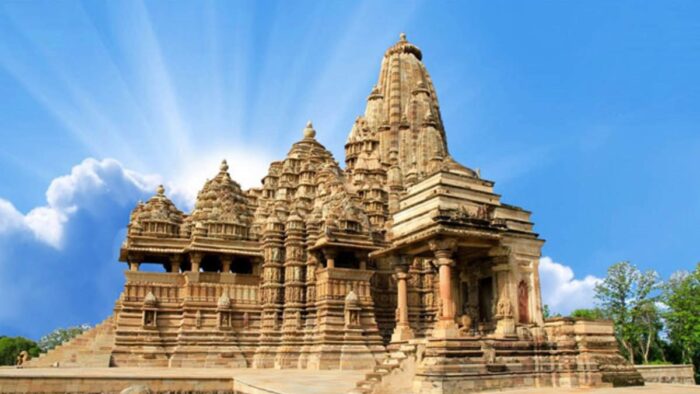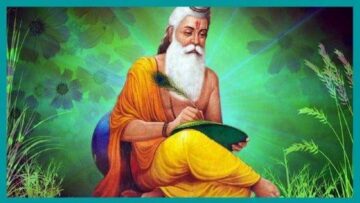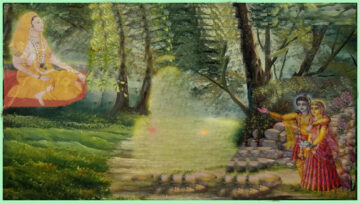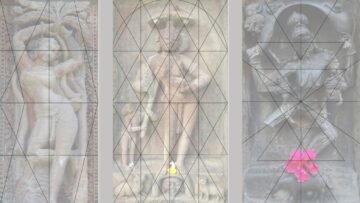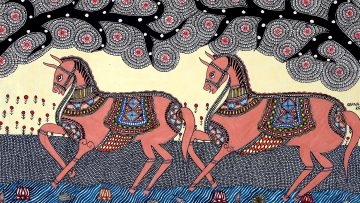The Indian consciousness considers Puranas to be “Apaurasheya” or “not created by man”, the same status which has been accorded to Vedas. Since long there has been a sense and feeling of faithfulness towards them. In Indian literature a lot of share and importance is owned by the Puranas. Puranas in a nut shell symbolizes the ancient religious and cultural heritage of India. It’s a large repository of indigenous cultural knowledge systems.
Shruti, Smriti and Purana are three important parts of Sanatan Vedic Dharma. Among them Shruti has the first superior place. Puranas are an important repository of the Indic knowledge possessed by our ancestors which has been mentioned very significantly in many Puranas under various domains.
One such Purana is Agni Purana which covers a whole range of topics including cosmology, mythology, genealogy, politics, education system, iconography, taxation theories, organization of army, theories on proper causes for war, martial arts, diplomacy, local laws, building public projects, water distribution methods, trees and plants, medicine, design and architecture, grammar, metrics, poetry, food and agriculture, rituals, geography cultural history, and numerous other topics.
The purana also focuses a lot on the Mandir Sthapatya i.e. temple architecture and iconography as well . There are chapters present in the Purana which talks about the topic in greater detail covering almost each and every aspect of it.
Agni Purana lays significant stress on the construction of the temples. It says that the auspicious resolution of the person who wishes to build the temple reservoir etc. for the deity destroys the sins of his thousands of births. Further it says that after the construction of the temple one receives the same bliss of bathing in all the pilgrimages. If someone out of misfortune creates a temple even from the soil, then also he is entitled to reach heaven.
Further it says that a man who builds an Ekayatan temple receives heaven. The creator of the Triratna temple receives Bramhalok, Panchayatan temple gets Shivalok and Vishnulok is attained on the construction of the Ashtayatan temple. The one who builds the Shodasayatan temple receives both enjoyment and salvation. Those who accidently build the temple of Lord Hari from dust while playing in childhood also receive the divine. Those who adorn the temple of God with lime and paint them with beautiful patterns, they finally reach the abode of God. The most special focus is laid on the conservation, restoration and reconstruction of an existing dilapidated temple. The person who renovates the temple which has fallen, is falling or has fallen half, receives a double fortune instead of building a new temple. The man who rebuilds the fallen temple or protects the fallen temple, the man receives the highest virtue in holy abode of Lord.
Agni Puran also lays much importance on the construction of idols for temples. It says that more than building the temple, the virtue is to build the idol of the deity. There is no end to the fruit of conducting the yagna related to the installation of the deity statue. Further stating about the nature of the material Agni Purana says that the wood statue is the best as compare to clay statue and statue made up of precious metals is best among all. Just by starting the construction of a Temple, the sin of seven births is destroyed and the people who build it are entitled to the receive heaven after the mortal life.
Lord Hayagreeva in Agni Purana mentions about the texts referred for the various aspects of Sthapatya. Agni Purana states that sages have propagated the Pancharatra and Saptaratras mentioned by Lord Hayagreeva in the mortal world and they are twenty-five in number.
Their names are as follows: Hayashirshtantra, Trilokyamohanantra, Vaibhavatantra, Pushkartantra, Prahaladantra, Gargyatantra, Galvatantra, Nardiyatantra, Shriprashnatantra, Shandilyatantra, Ishwartantra, Satyatantra, Shaunaktantra, Vashishtokta Gyansagartantra, Swayambhutantra, Kapiltantra, Garudatantra, Narayanatantra, Atreyatantra, Narasimhatantra, Anandtantra, Arunatantra, Boudhayantantra, Ashtangatantra and Vishwatantra.
According to these tantras, the Deity has to be installed by the Brahmins originating from Madhyadesha i.e. from Gangetic plains and one should avoid Brahmins originating from Kutch, Cauvery coastal country, Konkan, Kamarup, Kalinga, Kashi and Kashmir for the installation of the deity.
Agni Purana also states the location for installing a deity. According to the text the deities should always face the city and they should never have a back side towards the city. The pilgrimage places like Kurukshetra, Gaya etc. and adjacent shrines of the river are the most pious place for temple construction. Bramha’s temple should be in the centre, Indra’s temple in the east, temple of Agnidev and Matrika’s should be built in south west, the temple of Bhootgana and Yam in the south.
On the construction of a temple adjacent to an existing temple, the new temple should be constructed, leaving a distance double of the height of both the temples. Its further stated that the height of the Shikhara should be twice the height of the walls of the temple. The one fourth height of the shikhara has to be kept for the height of the circumambulation of the temple. According to the same, the gate should be made in both the lateral sections of the temple. The door should be facing each other in the opposite direction. The terrain in front of the temple should also be expanded same as the shikhara. In front of the temple, the pillars of the extension of the sabhamandapa should be made as tall as the mural. They are to be decorated with the intermediate columns. Whatever is the measurement kept for the garbhagriha, the same should be kept for sabhamandap or jagamohan.
Thereafter, the Vastu Mandap containing eighty-one posts (places) should be the best one to start. They should first worship the deities located within the adjacent positions of the doorway, and then worship the deities located near the proximal and the lastly at the end of doorjamb.
Agni Puran further puts some light on the choice of the stone or pindi for the construction of an idol. It says the larger the statue, the bigger and the beautiful will be the pindi. If the deity is of the height of five hands, then it should have a pedestal of one hand. The garbh of the idol should be constructed with half the value of the pindi and raise the reefs according to the value of the garbh itself. The height of the idol should be kept according to length of the walls. One should raise the height of the Shikhara twice the height of the inside sanctum of the temple. Make the circumambulation of the temple in width higher than the shikhara and make mukhamandap in the same height. It says that the doors of the niches should measure the eighth part of the garbha or according to the third part of the circumference. The height of the temple wall should be equal to one fourth of its height. The height of Gopuram of the temple should be one fourth of the temple. One should always build a Build a Garuda mandapa in front of a Vishnu temple.
It further says to drop the yarn diagonally from the top of the shukanasa and to get the lion statue constructed at the half of shikhara. The it says to stabilize the yarn on the shukanasa and bring it to the middle part. In the same way, the second side should also be initiated, there should be an altar above the shuknasa and a kalash with amalaka which should be made above the vedi. It should not be made huge. As far as the vedi is concerned, the Kalash should be always constructed above it.
The width of the gate of the temple should be half of its height. The door should be made very beautiful with the two branches of sycamore should be installed in the upper part of the gate with beautiful auspicious objects. The four dwarapalas i.e. Chand, Prachanda Vishvaksen and Vatsadand should be constructed on the gate. Srivigraha of the beautiful form of Lakshmi should be inscribed in the half of the branches of sycamore. She should have lotus in her hand and should be shown bathing by two giant elephants.
Agni Purana commands to make large avatara Bhagavatpratima in the upper part of the temple in the eight directions on all sides of the central diety. Varaha in the east, Narasimha in the south, Sridhar in the west, Hayagreeva in the north, Lord Parshuram in Agnikona, Sri Ram in Nairityakon, Vaman in Vayavakon and the idol of Vasudeva should be constructed in Ishan Kon. Temple design should always be composed by numbering the columns with even number i.e. eight, twelve, fourteen etc.
According to Agni Purana, Lord Vasudeva should be installed in the center of the Panchayatan temple. Out of the remaining four temples, the statue of Lord Vamana in Agnikona, Narasimha in Nairitya, Hayagreeva in Vyavyakon and Varaha Dev in Ishanakon should be installed. If you want to install the idol of Lord Narayana in the middle, then you should install the idol of the Durga in the Agnikona, the Sun in the south-west corner, Brahma in the Vyavakona, and the figure of the Shivalinga in the north-east corner.
Agni Purana says that after examining the land, one should worship Vastu Deity there. One should establish a deity suited to his interest by constructing the Deva Sabha (temple) according to his wish. The temple should be constructed at the intersection of the city or in the village etc. or not in the place away from habitation. The man who build’s and establishes the temple feels joyful in heaven by saving his entire lineage. The temples should be constructed in the same way that the palaces are made. Angled directions should be not allowed for the construction of a temple. Where the expenditure is high, one should not build temples at such spots.
Further there are many more chapters in Agni Purana which talks about the residential architecture and its planning. We also have specific chapters focused on the construction and restoration of the stepwells and water bodies. In a nutshell we can say that Agni Purana is one of the oldest repositories which is to be considered as a treatise for architecture in Indian context. The details mentioned in the Agni Purana has been replicated in a large amount in the temples across the India and one needs to research more on what all has been left out by the previous scholars mentioned in the text. Also one should also parallelly look in other religious texts about the same domain in order to have a analysis of the content which may have occurred due to the regional variation, technological advancement or craftsmanship.
Featured Image: economictimes.indiatimes.com
Disclaimer: The opinions expressed in this article belong to the author. Indic Today is neither responsible nor liable for the accuracy, completeness, suitability, or validity of any information in the article.

